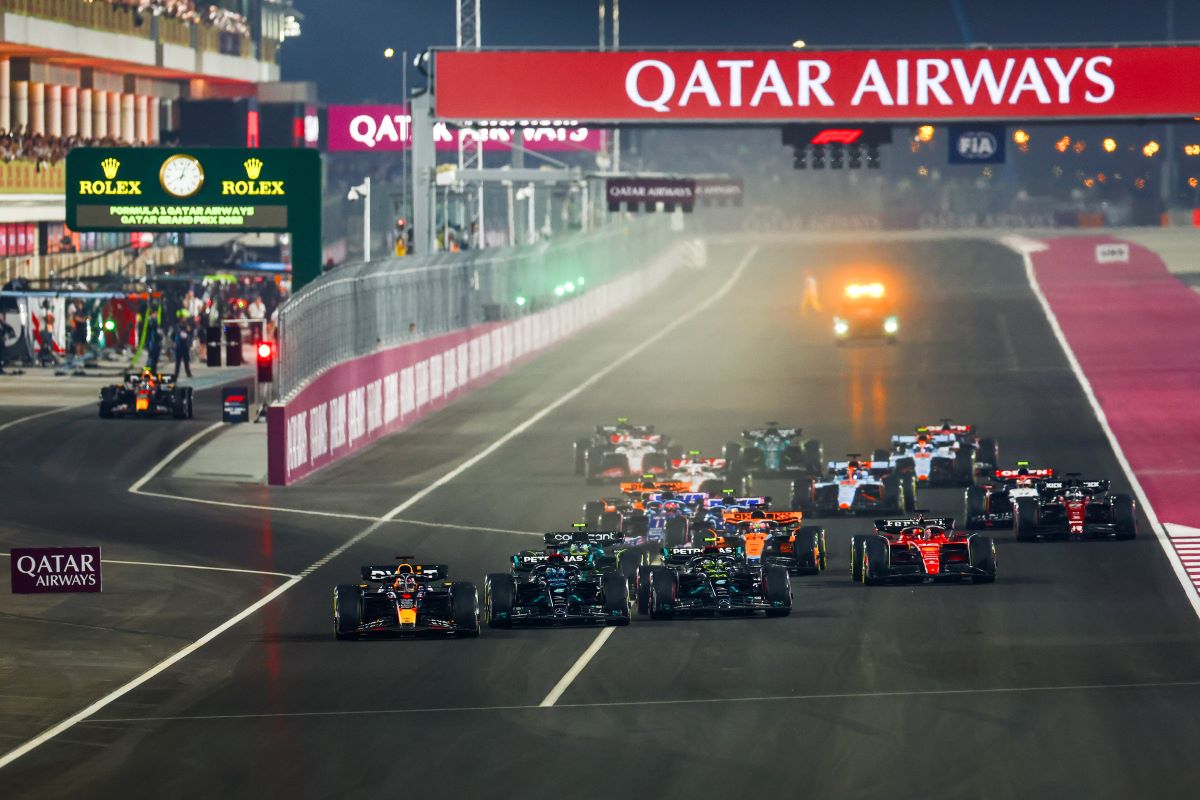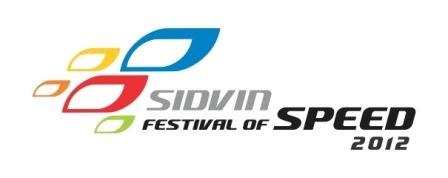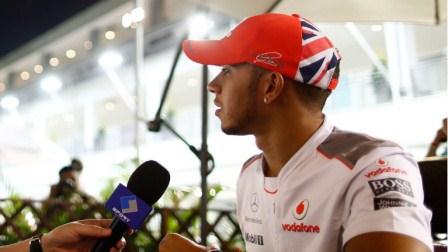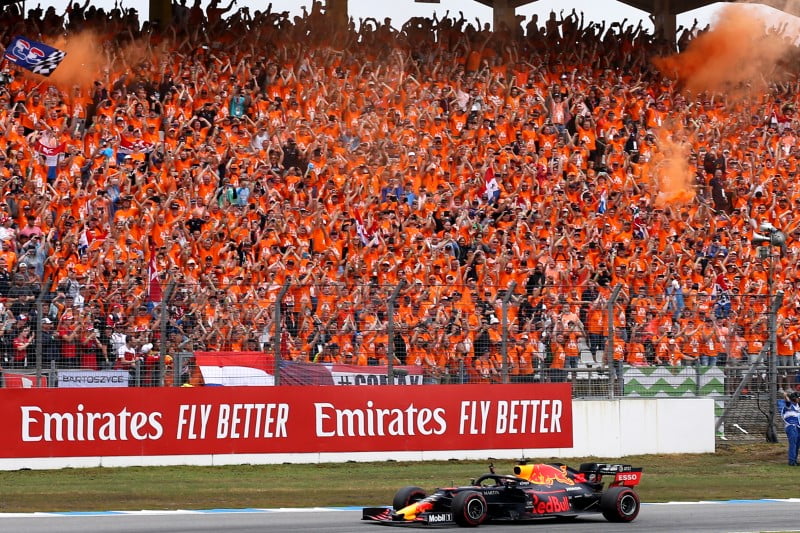2023 Qatar Grand Prix
Budding Formula 1 tech-journalist Ashwin Issac pens his ‘F1 Midfield Tales’ from the 2023 Qatar Grand Prix. ‘F1 Midfield Tales’ will be a combination of data and analysis that will aim to dissect the uber-competitive F1 midfield race-after-race.
Preface for the F1 midfield in Qatar
The Formula 1 paddock was in the desert of the Qatar Peninsula for the Formula 1 Qatar Airways Qatar Grand Prix 2023.
The Lusail or Losail International Circuit outside Losail, north of Doha, Qatar played host for the 18th round of the 2023 Formula 1 season.
We were first here in 2021, after a year of absence, and with a lucrative deal signed, we are back and will be coming back for many years to come. This circuit took shape in recent history and was built with motorcycle racing as its primary event. Still, the layout is such that it even suits wheel racing making it a fast-paced restless, and enjoyable track for the drivers, if the heat and humidity are ignored!
As mentioned before, it is a track with a relentless sequence of corners testing the cars and the precision of the drivers. Here is a track map for your reference:
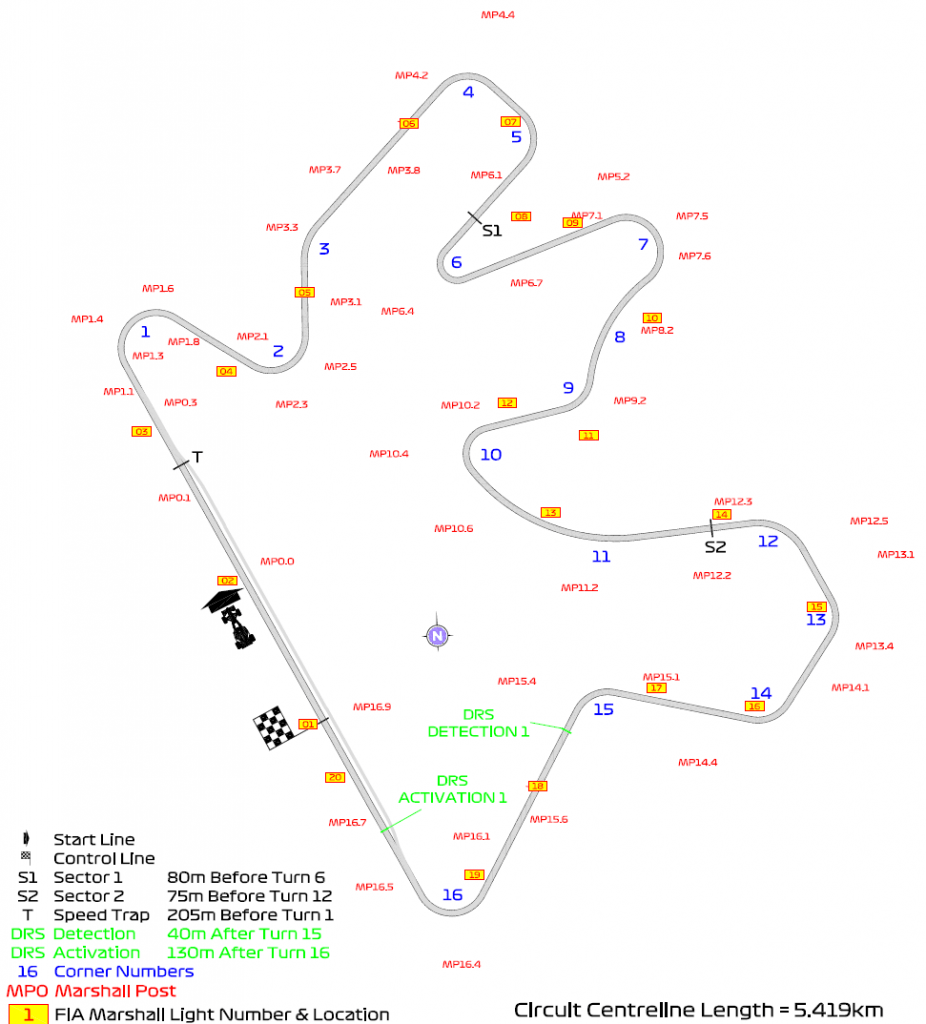
After the 2021 Grand Prix of Qatar, there were many complaints about the car munching curbs of the circuit. For this year’s Grand Prix, the circuit was subjected to a lot of change, the paddock and the pit area had new accommodating buildings and to address the curb issue a new type of curb was installed. The track was also resurfaced for good measure.
Pirelli had offered the hardest range of tyres for the weekend and there were no significant layout changes apart from a new pit lane entry. Alpha Tauri, Alfa Romeo, and Alpine had slight upgrades installed to their cars.
Even though the teams have had a single Grand Prix’s worth of experience on the track, it was of no use because of the subtle yet significant changes and a different generation of cars. With the narrative set let’s take a look at how the 4th sprint weekend of the season unfolded.
Observations from the F1 midfield in Qatar
For the comparisons, data with similar variables are selected for a viable analysis. For instance, the fastest sectors by a team and not individual drivers are considered for the qualifying examination. Lap times are collected for the same tyre compound at comparable race periods.
The sole practice session for the weekend was on unrepresentative conditions under the setting sun of Lusail. The track was very slippery to start and the desert sand with the strong winds made the drivers very twitchy.
Once the track was fairly rubbered in, only then representative times were set on the timing charts.
Qualifying battle between the F1 midfield in Qatar
The track evolution was expected to be very high and with the wick turned up, few drivers were having trouble with the track limits.
Here is a clustered bar chart representing the gaps of each driver in each sector of Q1 with Pierre Gasly as the benchmark as he was the fastest among the midfield. The deficit for each sector is represented by the bars. In contrast, the green line represents the difference between the potential team lap and the registered fastest lap of a driver and the red line represents the difference between the potential driver lap and the registered fastest lap of a driver.
Potential Team Lap: It’s the total of all the fastest sectors set by a team as a whole in the qualifying session.
Potential Driver Lap: It’s the total of all the fastest sectors set by the individual driver in the qualifying session.
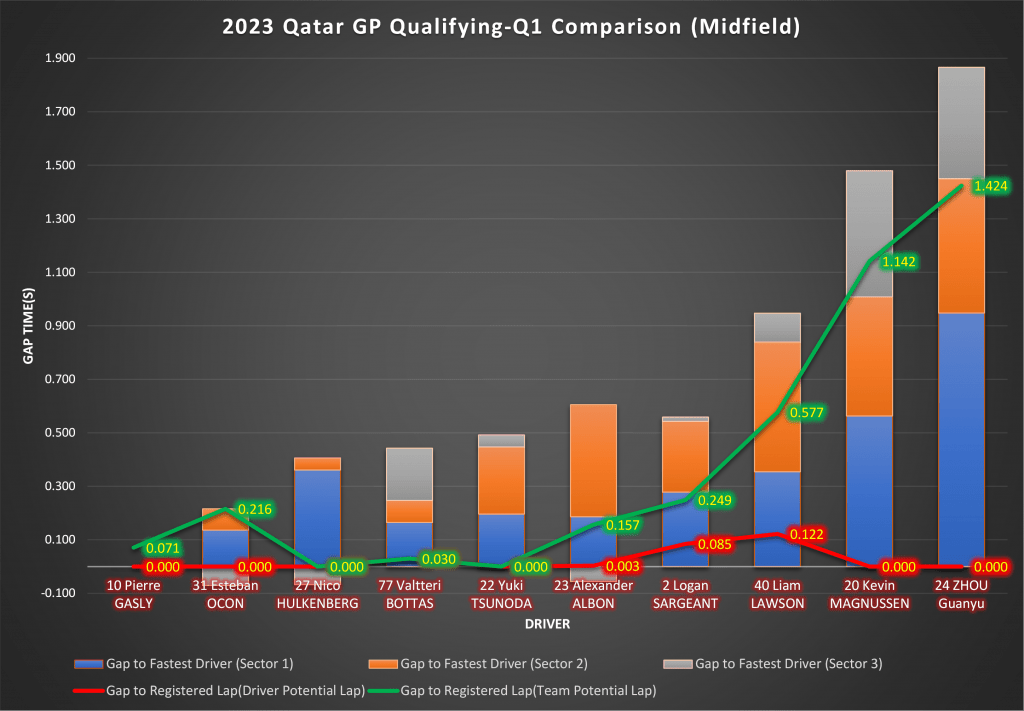
- In Q1 Pierre Gasly and Alpine were the fastest team and the pair to beat among the midfield.
- Nico Hulkenberg in his Haas was the third fastest driver but his teammate, who had never driven in Lusail, had a tough qualifying session.
- Bottas followed Nico showing a great turn of pace when compared to last race weekend but his teammate Zhou had a miserable Qualifying session, he claimed to be obstructed by traffic.
- Yuki in his Alpha had a similar pace to the Ferrari-engined cars ahead but his temporary teammate was not on the same page.
- The Williams at this stage had the slowest car.
At Least one driver from each team went ahead to Q2 which gave us another opportunity to compare the one-lap pace of the midfield cars.
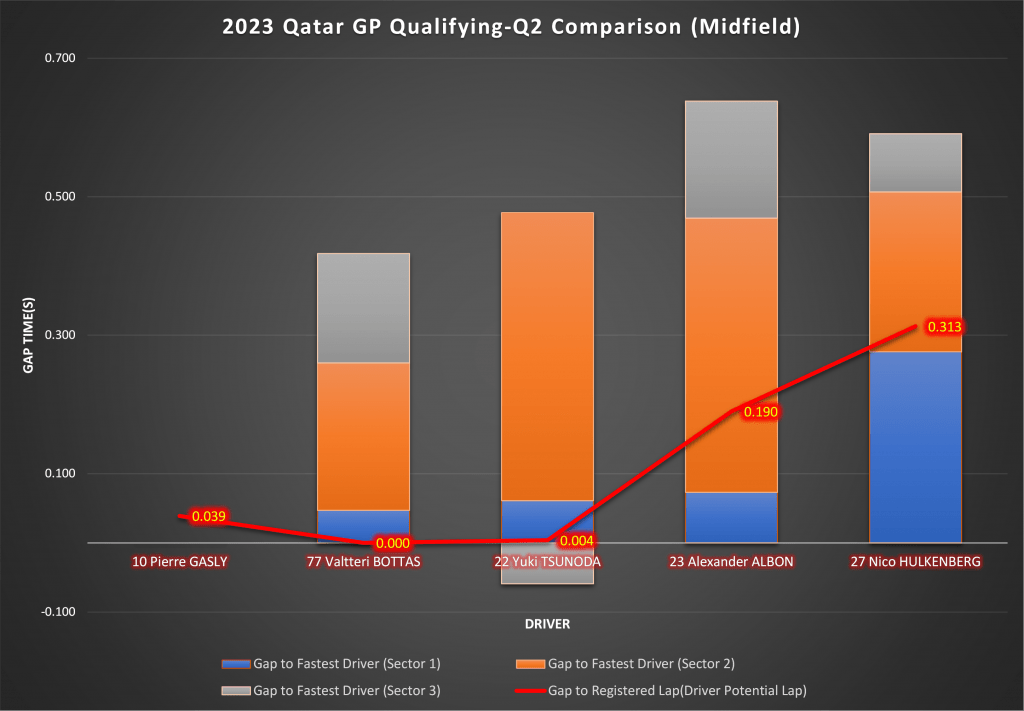
- The Alpine of Pierre Gasly had a significant pace advantage over the rest of the midfield.
- Alfa Romeo and Alpha Tauri were very similar in their lap times.
- Albon in his Williams and Hulkenberg in his Haas could have been on par with the teams ahead but they couldn’t string their fastest sectors together.
Alpine and Bottas went ahead to Q3 and qualified 7, 8, and 9 completing a successful qualifying session.
Sprint Shootout between the F1 midfield in Qatar
After the completion of the Friday sessions, Pirelli in their routine examination of used tyres found out that the tyres were failing structurally at the edge. They claimed that the high, elongated loads subjected to the tyres on the pyramid-shaped curbs were causing micro-tears at the shoulder of the tyre.
This revelation caused the FIA to make certain changes to the circuit before the start of the Saturday sessions. The track was narrowed at turns 12 and 13 by 80 cm to keep the cars away from the curbs.
This change forced the race director to hold a 10-minute familiarisation session before the shootout could take place.
This change in dimension resulted in a battle between the drivers and the track limits and the nightmares of Austria returned. Many drivers lost their best times thus resulting in a skewed session with many misplaces in the classification order. Here’s the final classification for the Sprint Shootout:

Nico Hulkenberg managed to keep it clean, which put him ahead as the fastest among the midfield.
Sprint Race between the F1 midfield in Qatar
The mediums and softs were the choices of tyres for the start of the sprint race. It was speculated that the soft wouldn’t last the 19 laps but a few teams did risk them, some trying to save medium tyres for the race on Sunday. Pirelli made it clear that a set of tyres couldn’t be used for more than 20 laps, it wasn’t mandated for the sprint as the sprint was for 19 laps.
The soft runners had reprises from 3 safety car interruptions. First, for the trapped car of Lawson who lost it very early on the first lap, second, for the trapped car of Sargeant who again lost his car in the third lap and the last one for a three-car crash involving Ocon, Perez, and Hulkenberg on lap 10.
These interruptions extended the life of the Soft tyres but at the end of the sprint, the cars on these tyres were dropping back like bricks. Zhou, Magnussen, and Stroll took the last safety car as an opportunity to change tyres.
A race pace analysis of the sprint would be futile because of all the interruptions but there were a lot of changes in positions and here’s a chart depicting that:
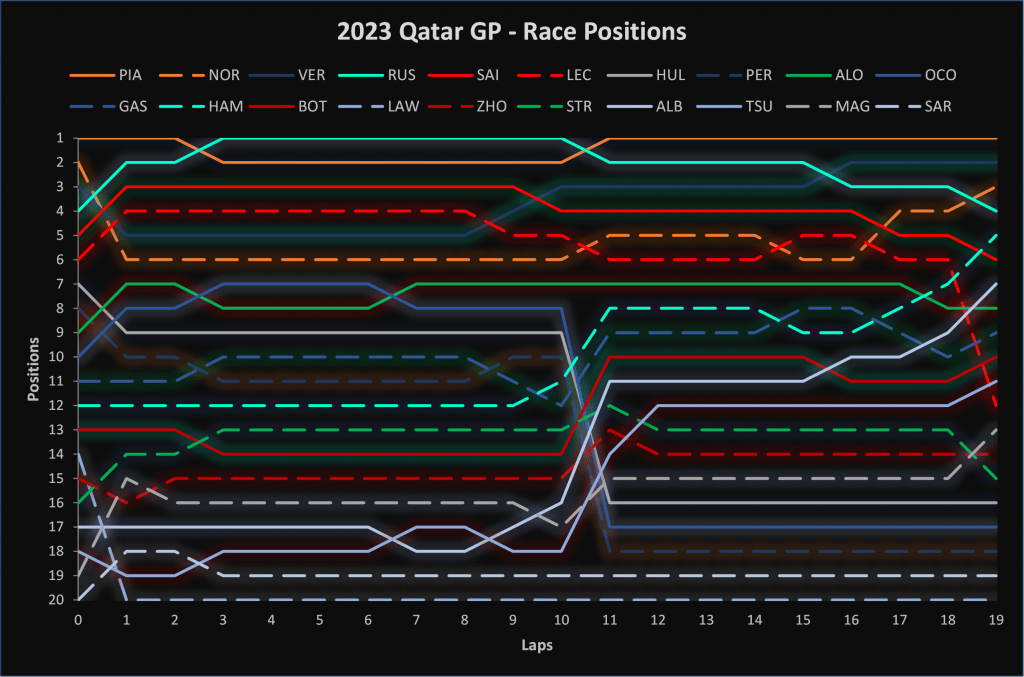
- Albon and Tsunoda were the biggest gainers courtesy of the three-car crash and three other cars gambling on a pit stop.
Below is a table of the positions lost and gained:
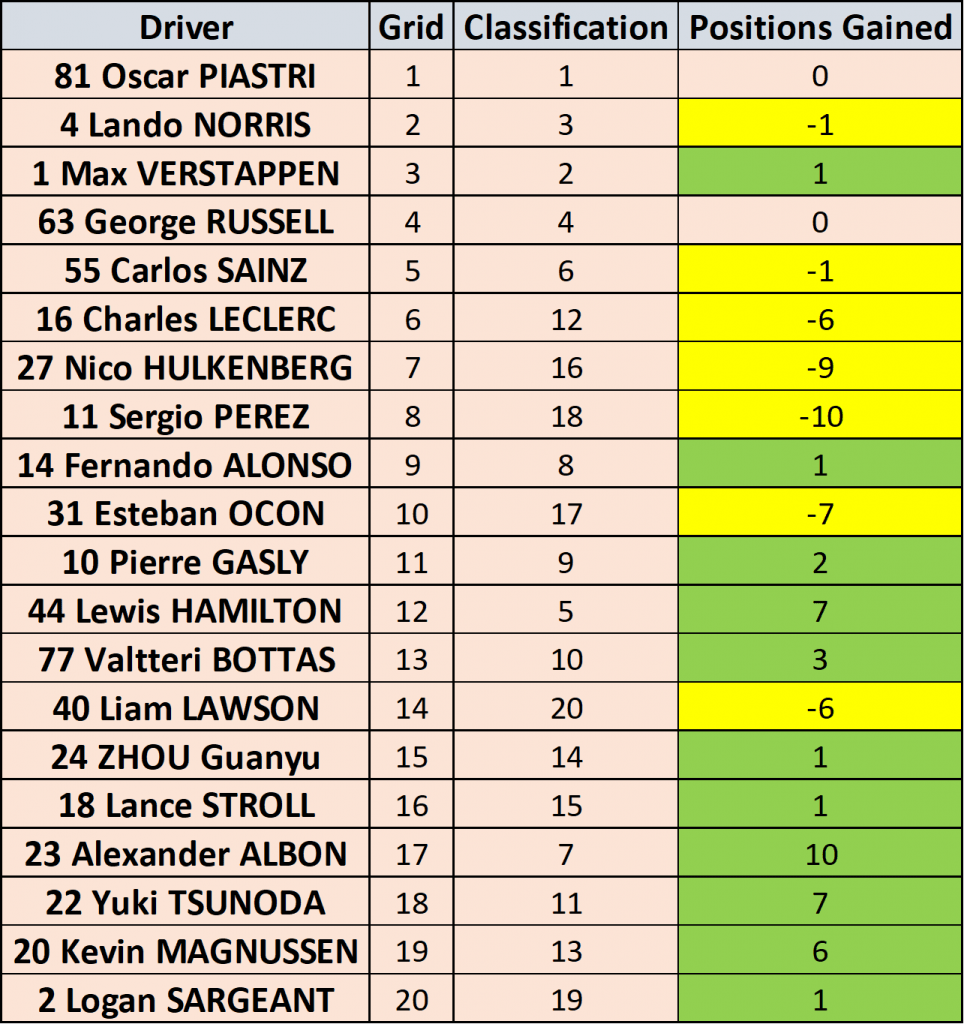
The Race between the F1 midfield in Qatar
After the Saturday sessions, Pirelli examined the tyres again to see if the 19-lap race had any effects on the integrity of the tyres. Fortunately/Unfortunately they did find the same micro tears and thus, along with the FIA mandated that each tyre would only be used for a total of 18 laps in the race. This meant that irrespective of how they split their stints, each driver had to make a minimum of three stops.
To assist the teams and observers Pirelli handed out a table of tyres available for the teams with the amount of laps left in them to be used for the race.
The Sprint race made it clear that the softs were bad race tyres but Magnussen, Bottas, and Lawson did bolt them on for the start of the race to make up a few positions with that extra grip but their plan was ruined by an opening lap skirmish between the Mercedes teammates, forcing the safety car to be deployed and this made the soft runners shift to medium tyres.
The strategy was split between drivers for the Hard and Medium tyres, let’s take a look at the pace of each team in these compounds:
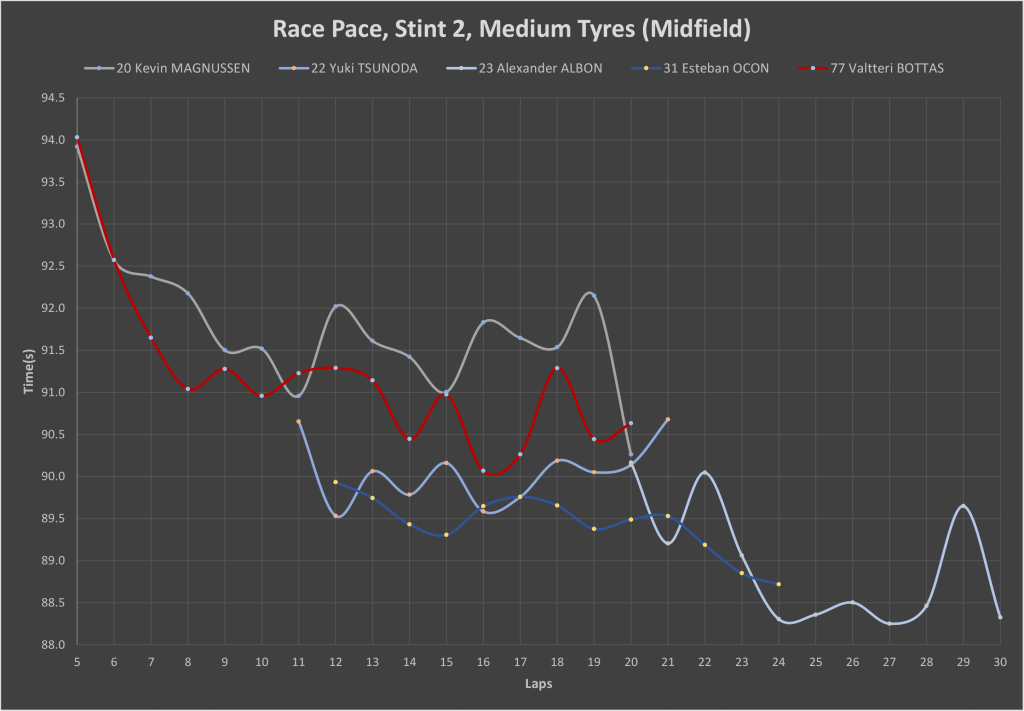
- At this stage on this compound of tyres, it is clear to see that the Alpine of Esteban Ocon had an advantage.
- Albon, who started his second stint later, was the second-fastest driver.
- Tsunoda was just a step behind Ocon but seemed to suffer from degradation.
- Bottas was another step behind on pace of Tsunoda.
- Magnussen in his Haas was the slowest and again the crippling degradation is very evident.
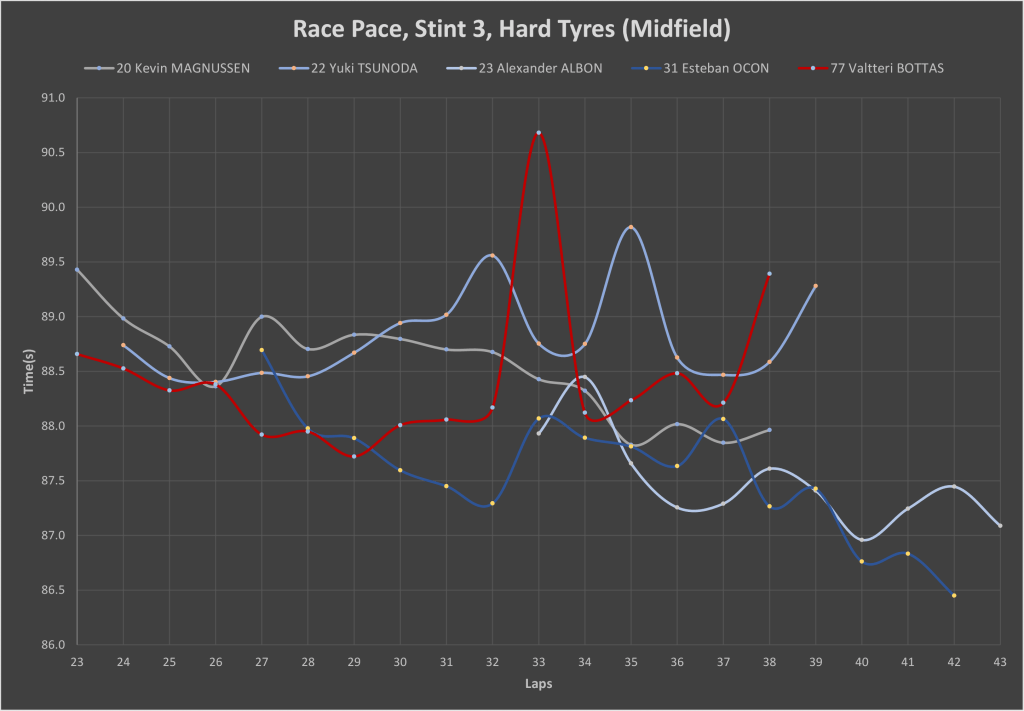
- On the Hard tyres, Alpine was the fastest team on average.
- Impressively, Albon in his Williams was not too far behind.
- Bottas initially was in terms with Ocon but fell behind as the laps piled up.
- Surprisingly, Magnussen in his Haas had a decent pace, which could be attributed to the mandated stint which didn’t highlight their high degradation.
- Tsunoda in His Alpha was a step behind the other teams in pace and this was reflected in where both the cars finished.
The mandated tyre stints should have been the biggest talking point after the race but track limits and more worrying, heat exhaustion and dehydration became the most prominent topic after the race.
The re-configured track limits were a challenge to a few drivers in the race but on this early October night, the heat and humidity of Losail took a toll on the driver’s bodies and threatened their well-being.
Logan Sargeant couldn’t complete the race as he fell unwell because of the conditions, it is to be noted that Logan doesn’t carry a drinks bottle in his car. Stroll complained of ‘blacking out’ in high-speed corners. Physical exhaustion was shared among the drivers across the paddock.
Conclusion from the F1 midfield in Qatar
The race weekend in Qatar was a mammoth challenge for the teams and drivers to say the least. They were subjected to new track conditions, a mid-weekend track change, mandated tyre stints, and more laboriously the heat and humidity.
The drivers and teams can be proud to say that they overcame all the difficulties to complete the weekend.
Alpine still was on top of the midfield and was not too far from the top 5 in terms of performance this weekend. Alfa Romeo had a successful weekend with both their drivers bagging a few precious points.
Alpha Tauri never arrived in Qatar and was out of sorts. Williams didn’t have an inspiring weekend either. Haas are still waiting for their substantial upgrade which is expected to be ready for the next race in COTA.
The track and facilities in Qatar are top-notch, but the scheduling of the race weekend this year was not viable in hindsight. Many fans have called for its cancellation in the future, which is a bad conclusion to the weekend.
Next year the race is scheduled in November when the temperatures are expected to be lower with bearable humidity, with minor changes to the track, we can be optimistic that the subsequent race weekends will be enjoyable for us and most importantly for the drivers and the teams.
Another Sprint weekend awaits us on the weekend after the next. The land of cowboys beckons for us for the 19th round of the 2023 F1 championship.
